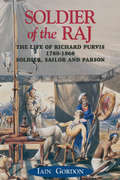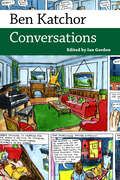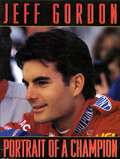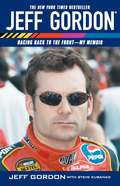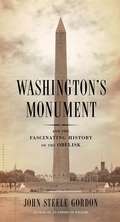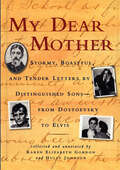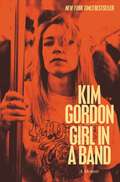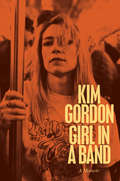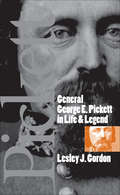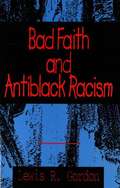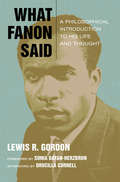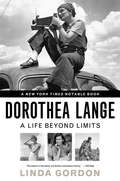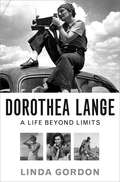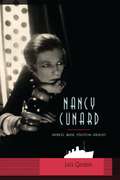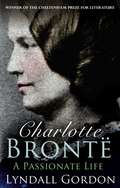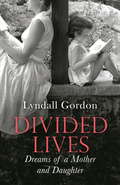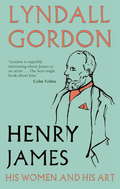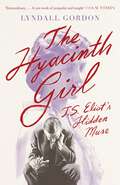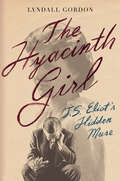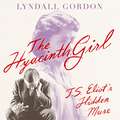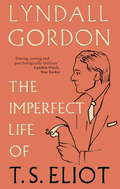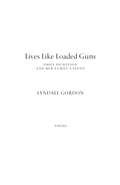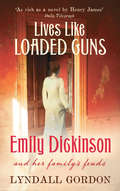- Table View
- List View
Soldier of the Raj: The Life of Richard Purvis, 1789–1869: Soldier, Sailor and Parson (19th Century Ser.)
by Iain GordonA meticulously researched biography of a young officer in the early part of the 19th Century. The son of an admiral, Richard Purvis went to sea in Nelson's Navy at the age of 11 before being commissioned at the age of 15 into the Bengal Army, part of the great East India Company. He went on to serve 17 years in India before returning to become a country parson.The emphasis of this book is on his Indian military service, with the story told largely through an extensive collection of previously unpublished contemporary letters. These give a unique and intimate insight into the daily lives, difficulties, ethos and humour of young British officers in India during the Napoleonic period. There was, of course, danger and action too and Purvis's role in the Nepal War is described. Patronage was also a feature of a young ambitious man's life during the Georgian period and the workings of this are fascinatingly revealed.
Ben Katchor: Conversations (Conversations with Comic Artists Series)
by Ian GordonAuthor Michael Chabon described Ben Katchor (b. 1951) as “the creator of the last great American comic strip.” Katchor’s comic strip Julius Knipl, Real Estate Photographer, which began in 1988, brought him to the attention of the readers of alternative weekly newspapers along with a coterie of artists who have gone on to public acclaim. In the mid-1990s, NPR ran audio versions of several Julius Knipl stories, narrated by Katchor and starring Jerry Stiller in the title role.An early contributor to RAW, Katchor also contributed to Forward, the New Yorker, Slate, and weekly newspapers. He edited and published two issues of Picture Story, which featured his own work, with articles and stories by Peter Blegvad, Jerry Moriarty, and Mark Beyer. In addition to being a dramatist, Katchor has been the subject of profiles in the New Yorker, a recipient of a MacArthur “Genius Grant” and a Guggenheim Fellowship, and a fellow at both the American Academy in Berlin and the New York Public Library.Katchor’s work is often described as zany or bizarre, and author Douglas Wolk has characterized his work as “one or two notches too far” beyond an absurdist reality. And yet the work resonates with its audience because, as was the case with Knipl’s journey through the wilderness of a decaying city, absurdity was only what was usefully available; absurdity was the reality. Julius Knipl, Real Estate Photographer presaged the themes of Katchor’s work: a concern with the past, an interest in the intersection of Jewish identity and a secular commercial culture, and the limits and possibilities of urban life.
Jeff Gordon: Portrait of a Champion
by Jeff Gordon"Go out and work hard and just take it one step at a time."He is a living legend, an athlete whodominates his sport as few otherscan. With his rainbow-colored No.24 Dupont Chevrolet Monte Carlo, JeffGordon has accomplished what noman before him could. In 1997, he wonhis second NASCAR Winston CupSeries championship...the Daytona500...the Coca-Cola 600...the Southern500...The Winston ...the Busch Clash.And he became only the second driverto win NASCAR's toughest prize: TheWinston Million.This stunning photographic portrait captures that extraordinary year--from the opening race at Daytona to theAtlanta Motor Speedway where the title became his-- and offers an intimate glimpse of the man behind the wheel himself. You'll discover what he really thinks about life on and off the track including: his familyNASCAR racingthe people who have helped shape his careerhis spiritualityhis fansbeing a role modelthe Rainbow Warriorsand much more.Honest and straightforward, Jeff shares his triumphs and his failures, what it takes to be the best and what the future may hold. Here is a rare look at an amazing champion on the road to glory."Don't ever quit. Don't ever stop fighting. It's not over 'til it's over."
Jeff Gordon, Racing Back to the Front: My Memoir
by Jeff Gordon Steve EubanksThe New York Times bestselling autobiography of one of auto racing's greatest drivers -- a pedal-to-the-metal look at the life of a NASCAR champion. Jeff Gordon is the hottest thing on the racetrack today! With his skill, determination, and heartfelt love of competitive driving, he has made the Winner's Circle his second home and has helped transform NASCAR racing into the most watched entertainment in America. Here, Jeff Gordon tells the story of his life behind the wheel -- from his unlikely beginnings on the California junior circuit to his meteoric rise to fame. Noting all the roadblocks he faced along the way, Gordon also gives readers an up-close, high-speed look at what it's really like to climb into the cockpit of a stock car every weekend and offers glimpses into the lives and work of his extraordinary crew. This is Jeff Gordon in front of the pack -- an inspirational, thrilling, and true story of courage and character from one of auto racing's greatest heroes.
Washington's Monument: And the Fascinating History of the Obelisk
by John Steele GordonThe colorful story behind one of America's greatest monuments and of the ancient obelisks of Egypt, now scattered around the world. Conceived soon after the American Revolution ended, the great monument to George Washington was not finally completed until almost a century later; the great obelisk was finished in 1884, and remains the tallest stone structure in the world at 555 feet. The story behind its construction is a largely untold and intriguing piece of American history, which acclaimed historian John Steele Gordon relates with verve, connecting it to the colorful saga of the ancient obelisks of Egypt. Nobody knows how many obelisks were crafted in ancient Egypt, or even exactly how they were created and erected since they are made out of hard granite and few known tools of the time were strong enough to work granite. Generally placed in pairs at the entrances to temples, they have in modern times been ingeniously transported around the world to Istanbul, Paris, London, New York, and many other locations. Their stories illuminate that of the Washington Monument, once again open to the public following earthquake damage, and offer a new appreciation for perhaps the most iconic memorial in the country.
My Dear Mother: Stormy Boastful, and Tender Letters By Distinguished Sons--From Dostoevsky to Elvis
by Karen Elizabeth Gordon Holly JohnsonThis fascinating collection of letters between sons and mothers offers an intimate and unexpected glimpse into the mind and heart of the artist. Here are letters by over fifty writers, painters, and musicians, from boyhood to manhood--including Elvis Presley, Ezra Pound, E. B. White, Paul Cezanne, Henry James, Henri de Toulouse-Lautrec, Richard Wagner, Victor Hugo, Jean Cocteau, Tennessee WIlliams, and Wolfgang Amadeus Mozart.
Girl in a Band
by Kim GordonKim Gordon, founding member of Sonic Youth, fashion icon, and role model for a generation of women, now tells her story—a memoir of life as an artist, of music, marriage, motherhood, independence, and as one of the first women of rock and roll, written with the lyricism and haunting beauty of Patti Smith's Just Kids.<P><P> Often described as aloof, Kim Gordon opens up as never before in Girl in a Band. Telling the story of her family, growing up in California in the '60s and '70s, her life in visual art, her move to New York City, the men in her life, her marriage, her relationship with her daughter, her music, and her band, Girl in a Band is a rich and beautifully written memoir.<P> Gordon takes us back to the lost New York of the 1980s and '90s that gave rise to Sonic Youth, and the Alternative revolution in popular music. The band helped build a vocabulary of music—paving the way for Nirvana, Hole, Smashing Pumpkins and many other acts. But at its core, Girl in a Band examines the route from girl to woman in uncharted territory, music, art career, what partnership means—and what happens when that identity dissolves.<P> Evocative and edgy, filled with the sights and sounds of a changing world and a transformative life, Girl in a Band is the fascinating chronicle of a remarkable journey and an extraordinary artist.
Girl in a Band
by Kim GordonFor many, Kim Gordon, vocalist, bassist and founding member of Sonic Youth, has always been the epitome of cool. Sonic Youth is one of the most influential and successful bands to emerge from the post-punk New York scene, and their legacy continues to loom large over the landscape of indie rock and American pop culture. Almost as celebrated as the band's defiantly dissonant sound was the marriage between Gordon and her husband, fellow Sonic Youth founder and lead guitarist Thurston Moore. So when Matador Records released a statement in the fall of 2011 announcing that--after twenty-seven years--the two were splitting, fans were devastated. In the middle of a crazy world, they'd seemed so solid. What did this mean? What comes next? What came before?In Girl in a Band, the famously reserved superstar speaks candidly about her past and the future. From her childhood in the sunbaked suburbs of Southern California, growing up with a mentally ill sibling who often sapped her family of emotional capital, to New York's downtown art and music scene in the eighties and nineties and the birth of a band that would pave the way for acts like Nirvana, as well as help inspire the Riot Grrl generation, here is an edgy and evocative portrait of a life in art. Exploring the artists, musicians, and writers who influenced Gordon, and the relationship that defined her life for so long, Girl in a Band is filled with the sights and sounds of a pre-Internet world and is a deeply personal portrait of a woman who has become an icon.
General George E. Pickett in Life and Legend
by Lesley J. GordonThe man who gave his name to the greatest failed frontal attack in American military history, George E. Pickett is among the most famous Confederate generals of the Civil War. But even today he remains imperfectly understood, a figure shrouded in Lost Cause mythology. In this carefully researched biography, Lesley Gordon moves beyond earlier studies of Pickett. By investigating the central role played by his wife LaSalle in controlling his historical image, Gordon illuminates Pickett's legend as well as his life. After exploring Pickett's prewar life as a professional army officer trained at West Point, battle-tested in Mexico, and seasoned on the western frontier, Gordon traces his return to the South in 1861 to fight for the Confederacy. She examines his experiences during the Civil War, including the famed, but failed, charge at the battle of Gettysburg, and charts the decline in his career that followed. Gordon also looks at Pickett's marriage in 1863 to LaSalle Corbell, like him a child of the Virginia planter elite. Though their life together lasted only twelve years, LaSalle spent her five decades of widowhood writing and speaking about her husband and his military career. Appointing herself Pickett's official biographer, she became a self-proclaimed authority on the war and the Old South. In fact, says Gordon, LaSalle carefully and deliberately created a favorable image of her husband that was at odds with the man she had married."Lesley Gordon's study of George E. Pickett explores the reality of the general's life as well as its romanticized version that survived through the generations. . . . Excellent military history informed by recent scholarship in social history, General George E. Pickett in Life and Legend provides a sophisticated analysis of one of the Civil War's most memorable figures."--Journal of Southern History"Insightful and judicious, sometimes unconventional, and combining a clear narrative thread with a persuasive analysis of available evidence, [this] biography is a convincing assessment of George Pickett's place in Confederate history, an intriguing examination of his--and LaSalle's--character and personality, and a valuable look at the Pickett of legend."--Civil War History"The novelty of this elegantly written book resides in the degree to which Gordon, rather than relying heavily on LaSalle, complaining about her, or both, as previous researchers have done, carefully sifts through her various accounts and separates fact from fiction--and suggests the truths that reside in fiction."--Journal of American HistoryThe man who gave his name to the greatest failed frontal attack in American military history, George E. Pickett is among the most famous Confederate generals of the Civil War. But even today he remains imperfectly understood, a figure shrouded in Lost Cause mythology. In this carefully researched biography, Lesley Gordon moves beyond earlier studies of Pickett. By investigating how Pickett's wife LaSalle, who outlived her husband by five decades, helped control his historical image, Gordon illuminates Pickett's legend as well as his life. -->
Bad Faith and Antiblack Racism
by Lewis R. GordonLewis Gordon presents the first detailed existential phenomenological investigation of antiblack racism as a form of Sartrean bad faith. Bad faith, the attitude in which human beings attempt to evade freedom and responsibility, is treated as a constant possibility of human existence. Antiblack racism, the attitude and practice that involve the construction of black people as fundamentally inferior and subhuman, is examined as an effort to evade the responsibilities of a human and humane world. Gordon argues that the concept of bad faith militates against any human science that is built upon a theory of human nature and as such offers an analysis of antiblack racism that stands as a challenge to our ordinary assumptions of what it means to be human.
What Fanon Said: A Philosophical Introduction to His Life and Thought
by Lewis R. GordonAntiblack racism avows reason is white while emotion, and thus supposedly unreason, is black. Challenging academic adherence to this notion, Lewis R. Gordon offers a portrait of Martinican-turned-Algerian revolutionary psychiatrist and philosopher Frantz Fanon as an exemplar of "livingthought" against forms of reason marked by colonialism and racism. Working from his own translations of the original French texts, Gordon critically engages everything in Fanon from dialectics, ethics, existentialism, and humanism to philosophical anthropology, phenomenology, and political theory aswell as psychiatry and psychoanalysis. Gordon takes into account scholars from across the Global South to address controversies around Fanon's writings on gender and sexuality as well as political violence and the social underclass. In doing so, he confronts the replication of a colonial and racist geography of reason, allowing theoristsfrom the Global South to emerge as interlocutors alongside northern ones in a move that exemplifies what, Gordon argues, Fanon represented in his plea to establish newer and healthier human relationships beyond colonial paradigms.
Dorothea Lange: A Life Beyond Limits
by Linda GordonWinner of the 2010 Bancroft Prize and finalist for the 2009 Los Angeles Times Book Prize in Biography: The definitive biography of a heroic chronicler of America's Depression and one of the twentieth century's greatest photographers. We all know Dorothea Lange's iconic photos--the Migrant Mother holding her child, the shoeless children of the Dust Bowl--but now renowned American historian Linda Gordon brings them to three-dimensional life in this groundbreaking exploration of Lange's transformation into a documentarist. Using Lange's life to anchor a moving social history of twentieth-century America, Gordon masterfully re-creates bohemian San Francisco, the Depression, and the Japanese-American internment camps. Accompanied by more than one hundred images--many of them previously unseen and some formerly suppressed--Gordon has written a sparkling, fast-moving story that testifies to her status as one of the most gifted historians of our time. Finalist for the Los Angeles Times Book Prize; a New York Times Notable Book; New Yorker's A Year's Reading; and San Francisco Chronicle Best Book.
Dorothea Lange: A Life Beyond Limits
by Linda GordonA fascinating and well-written portrait of a woman whose photography captured the struggles of depression-era American workers.
Nancy Cunard: Heiress, Muse, Political Idealist
by Lois GordonLois Gordon's absorbing biography tells the story of a writer, activist, and cultural icon who embodied the dazzling energy and tumultuous spirit of her age, and whom William Carlos Williams once called "one of the major phenomena of history."Nancy Cunard (1896-1965) led a life that surpasses Hollywood fantasy. The only child of an English baronet (and heir to the Cunard shipping fortune) and an American beauty, Cunard abandoned the world of a celebrated socialite and Jazz Age icon to pursue a lifelong battle against social injustice as a wartime journalist, humanitarian aid worker, and civil rights champion.Cunard fought fascism on the battlefields of Spain and reported firsthand on the atrocities of the French concentration camps. Intelligent and beautiful, she romanced the great writers of her era, including three Nobel Prize winners, and was the inspiration for characters in the works of Ezra Pound, T. S. Eliot, Aldous Huxley, Pablo Neruda, Samuel Beckett, and Ernest Hemingway, among others. Cunard was also a prolific poet, publisher, and translator and, after falling in love with a black American jazz pianist, became deeply committed to fighting for black rights. She edited the controversial anthology Negro, the first comprehensive study of the achievement and plight of blacks around the world. Her contributors included Langston Hughes, W. E. B. Du Bois, and Zora Neale Hurston, among scores of others.Cunard's personal life was as complex as her public persona. Her involvement with the civil rights movement led her to be ridiculed and rejected by both family and friends. Throughout her life, she was plagued by insecurities and suffered a series of breakdowns, struggling with a sense of guilt over her promiscuous behavior and her ability to survive so much war and tragedy. Yet Cunard's writings also reveal an immense kindness and wit, as well as her renowned, often flamboyant defiance of prejudiced social conventions.Drawing on diaries, correspondence, historical accounts, and the remembrances of others, Lois Gordon revisits the major movements of the first half of the twentieth century through the life of a truly gifted and extraordinary woman. She also returns Nancy Cunard to her rightful place as a major figure in the historical, social, and artistic events of a critical era.
Charlotte Bronte: A Passionate Life
by Lyndall GordonIn this groundbreaking and unconventional biography, Lyndall Gordon dismantles the insistent image of Charlotte Bronte as a modest Victorian lady, the slave to duty in the shadow of tombstones, revealing instead a strong and fiery woman who shaped her own life and transformed it into art. 'Sensitive, open-minded, vivid, full of psychological insight, [Gordon's] book is a brilliant reappraisal of Charlotte Bronte's life, work, and the flow between the two . . . It is also a deeply moving story' Jackie Wullschlager, Financial Times
Divided Lives: Dreams of a Mother and a Daughter
by Lyndall GordonLyndall Gordon was born in 1941 in Cape Town, a place from which `a ship takes fourteen days to reach anywhere that matters'. Born to a mother whose mysterious illness confined her for years to life indoors, Lyndall was her secret sharer, a child who grew to know life through books, story-telling and her mother's own writings. It was an exciting, precious world, pure and rich in dreams and imagination - untainted by the demands of reality. But a daughter grows up. Despite her own inability to leave home for long, Lyndall's mother believed in migration, a belief that became almost a necessity once the horrors of apartheid gripped their country. Lyndall loves the rocks, the sea, the light of Cape Town, but, struggling to achieve a life approved by her mother, she tries and makes a failure of living in Israel and then, back once again in her beloved South Africa she marries and moves with her husband to New York. It's in America in 1968 when suddenly Lyndall realises she cannot be, and does not want to be, the woman, the daughter and the mother her mother wants her to be. This is a wonderfully layered memoir about the expectations of love and duty between mother and daughter. The particular time and place, the people and the situation are Lyndall's, but the division between generations, the pain and the joy of being a daughter are everywoman's.
Henry James: His Women and His Art
by Lyndall GordonJames's friendship with Constance Fenimore Woolson ended in 1894 when he tried to drown a boatload of her dresses in the Venetian lagoon; she had fallen to her death three months before. It was an elusive friendship that echoed his mysterious relationship with Minny Temple who had died twenty years earlier. From their graves, these two women haunted his imagination and his fiction, inspiring the creation of his heroines.
The Hyacinth Girl: T. S. Eliot's Hidden Muse
by Lyndall GordonAmong the greatest of poets, T. S. Eliot protected his privacy while publicly associated with three women: two wives and a church-going companion. This presentation concealed a life-long love for an American: Emily Hale, a drama teacher to whom he wrote (and later suppressed) over a thousand letters. Hale was the source of "memory and desire" in The Waste Land; she is the Hyacinth Girl.Drawing on the dramatic new material of the only recently unsealed 1,131 letters Eliot wrote to Hale, leading biographer Lyndall Gordon reveals a hidden Eliot. Emily Hale now becomes the first and consistently important woman of life -- and his art. Gordon also offers new insight into the other spirited women who shaped him: Vivienne, the flamboyant wife with whom he shared a private wasteland; Mary Trevelyan, his companion in prayer; and Valerie Fletcher, the young disciple to whom he proposed when his relationship with Emily foundered. Eliot kept his women apart as each ignited his transformations as poet, expatriate, convert, and, finally, in his latter years, a man `made for love.'Emily Hale was at the centre of a love drama he conceived and the inspiration for the lines he wrote to last beyond their time. To read Eliot's twice-weekly letters to Emily during the thirties and forties is to enter the heart of the poet's art.
The Hyacinth Girl: T. S. Eliot's Hidden Muse
by Lyndall Gordon“Superb… brims with insight into T.S. Eliot’s complex love of women and its impact on his poetry. Beautifully written, fiercely honest, The Hyacinth Girl permanently dissolves the myth of impersonality, fathoming the vexed, tormented emotional life behind Eliot’s work.” —Jahan Ramazani, author of Poetry in a Global Age Winner of the Nobel Prize in Literature, T.S. Eliot was considered the greatest English-language poet of his generation. His poems The Waste Land and Four Quartets are classics of the modernist canon, while his essays influenced a school of literary criticism. Raised in St. Louis, shaped by his youth in Boston, he reinvented himself as an Englishman after converting to the Anglican Church. Like the authoritative yet restrained voice in his prose, he was the epitome of reserve. But there was another side to Eliot, as acclaimed biographer Lyndall Gordon reveals in her new biography, The Hyacinth Girl. While married twice, Eliot had an almost lifelong love for Emily Hale, an American drama teacher to whom he wrote extensive, illuminating, deeply personal letters. She was the source of “memory and desire” in The Waste Land. She was his hidden muse. That correspondence—some 1,131 letters—released by Princeton University’s Firestone Library only in 2020—shows us in exquisite detail the hidden Eliot. Gordon plumbs the archive to recast Hale’s role as the first and foremost woman of the poet’s life, tracing the ways in which their ardor and his idealization of her figured in his art. For Eliot’s relationships, as Gordon explains, were inextricable from his poetry, and Emily Hale was not the sole woman who entered his work. Gordon sheds new light on Eliot’s first marriage to the flamboyant Vivienne; re-creates his relationship with Mary Trevelyan, a wartime woman of action; and finally, explores his marriage to the young Valerie Fletcher, whose devotion to Eliot and whose physical ease transformed him into a man “made for love.” This stunning portrait of Eliot will compel not only a reassessment of the man—judgmental, duplicitous, intensely conflicted, and indubitably brilliant—but of the role of the choice women in his life and his writings. And at the center was Emily Hale in a love drama that Eliot conceived and the inspiration for the poetry he wrote that would last beyond their time. She was his “Hyacinth Girl."
The Hyacinth Girl: T. S. Eliot's Hidden Muse
by Lyndall GordonThe revealing of T. S. Eliot's hidden muse - Emily Hale, the Hyacinth Girl of the famous The Waste Land poem'Extraordinary... A rare work of sympathy and insight' Colm Tóibín'Gordon sifts through the documents with her customary care and delicacy' Frances Wilson, Telegraph'Thanks to Gordon's meticulous research and inspired storytelling we will never read [Eliot's] poems the same way again' Heather Clark'Exquisitely nuanced' Kathryn Hughes, Sunday Times'An illuminating account' Publishers Weekly'As exciting as a detective story... Gordon establishes the profound influence [the relationship] had upon the substance and in particular upon the imagery of Eliot's work' Margaret Drabble, New StatesmanAmong the greatest of poets, T. S. Eliot protected his privacy while publicly associated with three women: two wives and a church-going companion. This presentation concealed a life-long love for an American: Emily Hale, a drama teacher to whom he wrote (and later suppressed) over a thousand letters. Hale was the source of "memory and desire" in The Waste Land; she is the Hyacinth Girl.Drawing on the dramatic new material of the only recently unsealed 1,131 letters Eliot wrote to Hale, leading biographer Lyndall Gordon reveals a hidden Eliot. Emily Hale now becomes the first and consistently important woman of life -- and his art. Gordon also offers new insight into the other spirited women who shaped him: Vivienne, the flamboyant wife with whom he shared a private wasteland; Mary Trevelyan, his companion in prayer; and Valerie Fletcher, the young disciple to whom he proposed when his relationship with Emily foundered. Eliot kept his women apart as each ignited his transformations as poet, expatriate, convert, and, finally, in his latter years, a man `made for love.'Emily Hale was at the centre of a love drama he conceived and the inspiration for the lines he wrote to last beyond their time. To read Eliot's twice-weekly letters to Emily during the thirties and forties is to enter the heart of the poet's art.
The Imperfect Life of T. S. Eliot
by Lyndall GordonT. S. Eliot once spoke of a lifetime burning in every moment. He had the mind to conceive a perfect life, and he also had the honesty to admit he could not meet it.'He was a man of extremes whose deep flaws and high virtues were interfused,' writes Lyndall Gordon in this perceptive and innovative biography of the great poet. She brilliantly explores his poetry, drama and essays in relationship to the four quite different women in his life and to his time in America and England. The Imperfect Life of T.S. Eliot follows the trials of a searcher whose flaws and doubts speak to all of us whose lives are imperfect.
Lives Like Loaded Guns: Emily Dickinson and Her Family's Feuds
by Lyndall GordonA startling portrayal of one of America's most significant literary figures that will change the way we view her life and legacy In 1882, Emily Dickinson's brother Austin began a passionate love affair with Mabel Todd, a young Amherst faculty wife, setting in motion a series of events that would forever change the lives of the Dickinson family. The feud that erupted as a result has continued for over a century. Lyndall Gordon, an award-winning biographer, tells the riveting story of the Dickinsons, and reveals Emily as a very different woman from the pale, lovelorn recluse that exists in the popular imagination. Thanks to unprecedented use of letters, diaries, and legal documents, Gordon digs deep into the life and work of Emily Dickinson, to reveal the secret behind the poet's insistent seclusion, and presents a woman beyond her time who found love, spiritual sustenance, and immortality all on her own terms. An enthralling story of creative genius, filled with illicit passion and betrayal, Lives Like Loaded Gunsis sure to cause a stir among Dickinson's many devoted readers and scholars.
Lives Like Loaded Guns: Emily Dickinson and Her Family's Feuds
by Lyndall GordonEmily Dickinson is regarded as one of the greatest poets of all time, but she has come to us as an odd and helpless woman living a life of self imposed seclusion. Lyndall Gordon sees instead a volcanic character living on her own terms and with a steely confidence in her own talent; a woman whose family feuded over a hothouse of adultery and devastating betrayal and a woman who had her own secret. After her death the fight for possession of Emily and her poetry became the feud's focus.'Lives Like Loaded Guns has cracked one of poetry's most enduring enigmas . . . It rescues Dickinson from the image of the passive, heart-broken recluse. It is a worthy monument to a poet even more extraordinary than we realised' Olivia Cole, Financial TimesFrom the acclaimed biographer of Mary Wollstonecraft, T.S. Eliot, Charlotte Bronte, Virginia Woolf and Henry James.
Lives Like Loaded Guns: Emily Dickinson and Her Family's Feuds
by Lyndall GordonEmily Dickinson is regarded as one of the greatest poets of all time, but she has come to us as an odd and helpless woman living a life of self imposed seclusion. Lyndall Gordon sees instead a volcanic character living on her own terms and with a steely confidence in her own talent; a woman whose family feuded over a hothouse of adultery and devastating betrayal and a woman who had her own secret. After her death the fight for possession of Emily and her poetry became the feud's focus.'Lives Like Loaded Guns has cracked one of poetry's most enduring enigmas . . . It rescues Dickinson from the image of the passive, heart-broken recluse. It is a worthy monument to a poet even more extraordinary than we realised' Olivia Cole, Financial TimesFrom the acclaimed biographer of Mary Wollstonecraft, T.S. Eliot, Charlotte Bronte, Virginia Woolf and Henry James.
